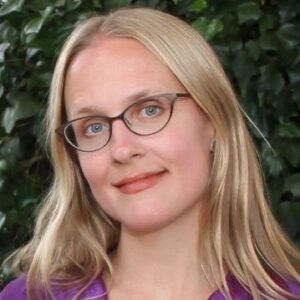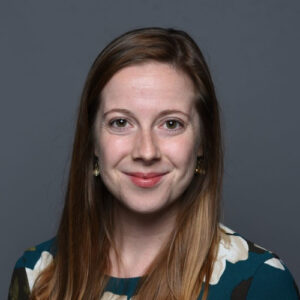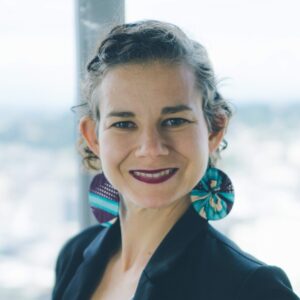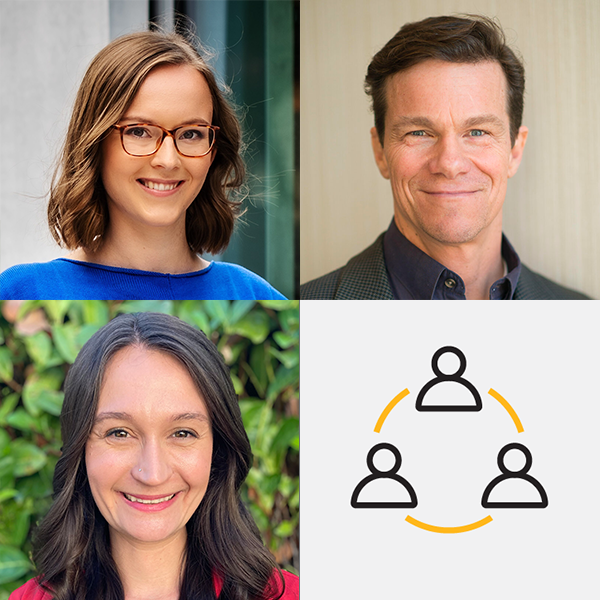What are you and your company doing to help reduce embodied carbon emissions?
Amanda Kaminsky
CLF Board Member; Founder + Principal, Building Product Ecosystems LLC
After teenage summer jobs in Pennsylvania manufacturing, and a UVA college education in architecture, my professional career quickly rooted itself in NYC design, then construction, and finally in real estate development for the ability to drive decision making there. My core responsibilities in procurement and material resource management required deep engagement with the broad array of folks who manufacture, design, build, operate, dwell in, work in, disassemble, reuse, regulate, and feel the impacts of our buildings.
Through daily interactions with these diverse collaborators working toward better purchasing outcomes, I realized a need to focus on systemic health improvements to the way we utilize resources, to remove externalized impacts. We’re needing to do a better job of connecting the dots between phases of responsibility for our resources, to nurture material ecosystems. In 2014, Building Product Ecosystems was established to utilize collective purchasing power, transparent health data, and proactive project teams, manufacturing, and recycling networks to pilot, standardize, and scale lasting changes to high volume building material cycles.
Human health, waste minimization, and embodied carbon reduction are targets of Building Product Ecosystems’ ongoing ground-glass pozzolan cement replacement, closed loop gypsum drywall, and building deconstruction/reuse work. With each of these work streams, we are hyper-focused on establishing a foundation of data transparency and a vision of whole system health. Building on this solid foundation, we nurture the ecosystems necessary to optimize resource cycles by collaborating with folks aligned with our targets on implementing the change we want to see, at scale. I am excited to collaborate with CLF on optimizing resource cycles for greatly reduced embodied carbon in the areas I work, and elsewhere, at scale. I look forward to continued learning from/with the CLF community, and contributing to its diverse growth.

Amanda Kaminsky
Sofia Segebre
CLF staff and undergraduate student; BLA Landscape Architecture, University of Washington
Working with the Carbon Leadership Forum (CLF) has opened my eyes to see that coming together can make a difference and that we can mitigate our carbon print on earth. I am a student at the University of Washington majoring in Landscape Architecture where I first learned the significance of embodied carbon.
I knew that carbon emissions are a pressing issue and entering the field my objective has been mending the effects of pollution with the idea that architecture and nature shake hands. In other words, building environmentally conscious. I began asking myself how reducing carbon globally was possible and understanding that as a designer I had a responsibility. Last year I began working with the CLF and have seen how hundreds of individuals and organizations join the vision.
It is really inspiring to see the CLF grow because it gives this generation and the following hope of a cleaner, more sustainable future. It has provided me with a guiding platform and network to reach my objective as a landscape architect in doing my part to reduce embodied carbon. I am motivated to be a part of the CLF because we are a growing group of humans coming together, educating each other, producing alternative resources, and innovating the planet for the purpose of a healthier environment to live in.

Sofia Segebre
Marta Schantz
CLF Board Member; Senior Vice President, Urban Land Institute (ULI) Greenprint Center for Building Performance
At the Urban Land Institute, we have a mission of responsible land use through creating and sustaining thriving communities. With that inherently comes a focus on climate change. I lead ULI’s Greenprint Center for Building Performance, which works with the real estate industry to make the business case for green buildings – reducing carbon emissions, and tying that to increased building value.
With over a decade of experience in the sustainability/buildings industry, I have developed a deep appreciation for the green buildings sector, the trends at the leading edge, and the drivers for stakeholder action. Reducing embodied carbon in the built environment is a critical part of addressing the climate crisis, and the real estate community holds great potential to drive progress industry-wide. I see CLF as a lynchpin in the industry’s efforts to accelerate embodied carbon reductions.
Over the past few years, my team at ULI has brought attention to the topic of embodied carbon to spur newfound interest from the real estate industry around actionable and cost-effective ways to reduce embodied carbon in developments. The majority of real estate developers and building owners do not (yet) know what embodied carbon is, do not know why it needs to be reduced, do not know how to get started on reducing it… and at the same time have the power to drive the industry forward with their choices. CLF has established itself as the preeminent organization to support, accelerate, and direct the increased industry interest in embodied carbon. I’m eager to contribute my expertise, ideas, and connections to get the real estate sector in particular more involved.

Marta Schantz
Courtney Blodgett
CLF Board Member; Market Strategy Director, McKinstry
20 years ago, the Kyoto Protocol sparked my passion for reducing greenhouse gas emissions and improving resiliency to climate change. I’ve been driven by that passion ever since. It My passion has brought me around the world, to work on renewable energy, energy efficiency, and sustainable finance programs throughout Africa, Southeast Asia, and Latin America. Since returning to the US, I have done venture capital investing in clean technology, run a blockchain based peer-to-peer energy trading start-up, and am now a Market Strategy Director at McKinstry focused on eradicating embedded and operating carbon emissions from our corporate and project efforts.
The consequences of climate change are escalating toward a point of no return. Rising building costs are exasperating an affordability crisis that limits the investment needed to balance the natural and built environment. Systemic inequity and racism are embedded in nearly every aspect of our society. These crises are interrelated with those who have the least poised to suffer the most. It is our responsibility to face these crises head on by building a zero-carbon future. Together, we will innovate the waste and climate harm from the built environment.
At McKinstry, I help lead our work to achieve net zero carbon by 2030. This effort extends to I also help coordinate our client-facing zero carbon services, which include building electrification, renewable energy, active energy management, zero carbon building design/build, and shared energy EcoDistricts. With 40% of US emissions coming from the building materials and construction sector, reducing embodied carbon emissions is an important part of the fight against climate change. CLF is a critical coordinator of the movement to reduce embodied carbon. I’m excited to help the built environment community improve their understanding about embodied carbon and how they can take action to reduce emissions.

Courtney Blodgett







